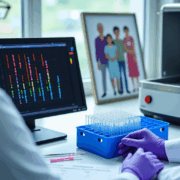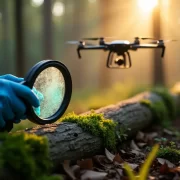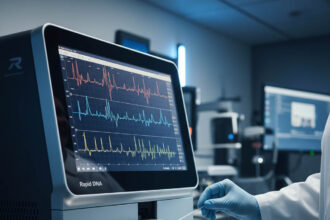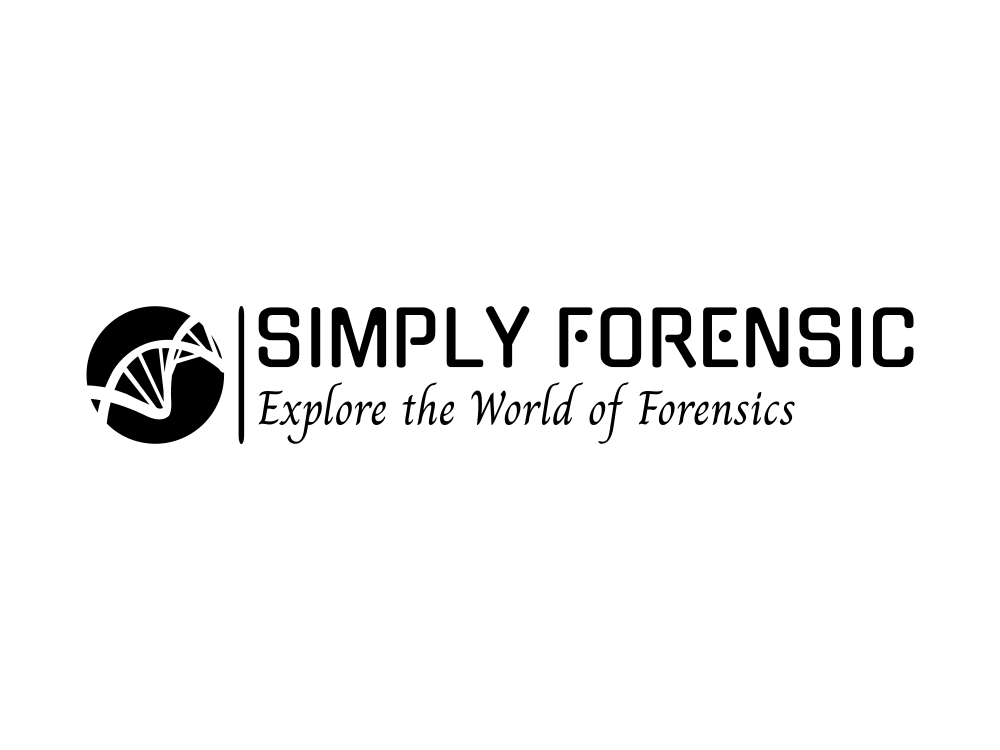Addressing Common Defense Challenges
Defense attorneys test DNA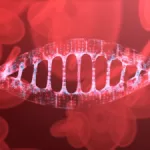 DNA, or Deoxyribonucleic Acid, is the genetic material found in cells, composed of a double helix structure. It serves as the genetic blueprint for all living organisms. Read Full Definition evidence
DNA, or Deoxyribonucleic Acid, is the genetic material found in cells, composed of a double helix structure. It serves as the genetic blueprint for all living organisms. Read Full Definition evidence
- Addressing Common Defense Challenges
- Contamination Claims
- Chain of Custody Issues
- Alternative Source Arguments
- Best Practices for Overcoming Defense Challenges
- DNA Evidence Presentation Strategies
- Visual Aids and Demonstrations
- Simplifying Complex Concepts
- Jury Education Techniques
- Effective Statistical Presentation
- Conclusion
Contamination Claims
DNA evidence faces frequent credibility attacks through contaminationContamination - The unwanted transfer of material from another source to a piece of physical evidence. The inadvertent touching of a weapon, thereby adding fingerprints to it is an example of evidence contamination. Read Full Definition arguments. Laboratory research reveals multiple contamination pathways:
- Evidence cross-contaminationCross-contamination - The unwanted transfer of material between two or more sources of physical evidence. For example, improperly collecting biological evidence such as blood could lead to one sample mixing with another sample and contaminating Read Full Definition
- Collection process transfer
- Environmental exposure damage
- Laboratory procedure errors
Scientific evidence shows proper air drying and paper packaging shield biological samples from degradation [22]. Natural elements pose constant threats: heat, sunlight, bacteria, and mold can compromise DNA integrity [2].
Chain of Custody Issues
DNA evidence admissibility rests on unbroken custody chains. Strong documentation captures:
- Evidence item identifiers
- Collection specifics
- Handler records
- Transfer details
- Storage conditions
Research confirms that thorough documentation deflects defense challenges [22]. Each evidence transfer demands dated signatures [4]. Modern tracking systems enhance accuracyIn scientific and measurement contexts, "accuracy" refers to the degree of proximity or closeness between a measured value and the true or actual value of the measured quantity. Accuracy indicates how well a measurement reflects Read Full Definition – HORIZON LIMS exemplifies this through encrypted coding and automated control [22].
Alternative Source Arguments
Touch DNA and mixed samples often ignite debates about the possibility of alternative sources. Defense teams frequently propose innocent explanations for the presence of DNA at crime scenes. Three key factors shape these arguments.
DNA Transfer Mechanics
- Scientific Basis: Secondary transfer research highlights how DNA can move between surfaces without direct contact. For example, DNA can transfer from an individual to an object via an intermediary surface.
- Prosecutorial Strategy: Prosecutors must establish clear links between the DNA evidence and the criminal act in question.
- Contextual Example: Trace DNA found on an object like a weapon may require additional circumstantial evidence to substantiate its relevance to the crime.
- Importance: Studies validate the plausibility of secondary transfer, making it crucial to present context that supports the DNA’s evidentiary significance [22].
Statistical Power
- Rarity of DNA Profiles: DNA profile matches across multiple loci
A locus is the precise position of a gene on a chromosome. Different alleles of the same gene occupy the same locus. Read Full Definition yield random match probabilities often exceeding one in billions, providing strong counterarguments to claims of alternative sources.
- Avoiding Prosecutor’s Fallacy: It is vital not to equate statistical rarity with direct proof of guilt. The random match probability should be presented as evidence of the DNA’s uniqueness, not definitive evidence of the individual’s involvement.
- Illustrative Comparison: Prosecutors can explain match probability through relatable analogies, such as comparing the rarity of the DNA profile to the chance of a specific lottery number combination.
- Impact: Proper statistical explanation bolsters the credibility of the DNA evidence while addressing potential misinterpretations [4].
Scene Context
- Location Relevance: The significance of DNA evidence is heavily influenced by its discovery location. DNA found in restricted or private areas (e.g., a locked room or personal belongings) carries greater evidentiary weight than DNA recovered from high-traffic public spaces.
- Prosecutorial Focus: Prosecutors should contextualize DNA evidence with location-specific details to strengthen its linkage to the crime.
- Example: DNA on a broken window at a burglary scene versus DNA on a door handle in a public area carries different implications [22].
Best Practices for Overcoming Defense Challenges
- Complete Handling Records: Maintain detailed chain-of-custody documentation, recording every transfer and condition of the evidence.
- Expert Collaboration: Work closely with forensic DNA experts to address technical queries and ensure the reliability of interpretations presented in court.
- Clear Statistical Presentation: Use visual aids and simple analogies to explain statistical probabilities and match likelihoods, enhancing jury understanding.
- Protocol Compliance Proof: Demonstrate strict adherence to collection and processing protocols to eliminate contamination and mishandling concerns.
Quality assuranceQuality assurance (QA) is a comprehensive set of activities and processes to ensure the overall quality and reliability of the work conducted within a laboratory. QA is a proactive approach that focuses on improving scientific Read Full Definition programs are integral to fortifying the credibility of DNA evidence. Accredited laboratories adhering to international standards, such as ISO/IEC 17025, exhibit significantly lower contamination rates and procedural errors [22]. These programs ensure:
- Proficiency Testing: Analysts’ capabilities are routinely evaluated.
- Cross-Verification: Results undergo independent review for accuracy.
- Adherence to Standards: Evidence is handled and processed using scientifically validated methods.
Successfully addressing alternative source claims hinges on a multifaceted approach combining scientific clarity, robust statistical reasoning, and contextual evidence. By emphasizing rigorous documentation, expert collaboration, and protocol adherence, prosecutors can effectively counter-defense arguments and reinforce the reliability of DNA evidence in court.
DNA Evidence Presentation Strategies
Presenting DNA evidence effectively combines scientific precision with clear, engaging communication tailored to jurors’ understanding. Strategic use of visual aids, simplified explanations, and jury education techniques ensures that even complex DNA evidence is accessible and compelling.

Visual Aids and Demonstrations
The Role of Visuals in Courtroom Success
Effective visual aids significantly enhance juror comprehension and retention. Studies show that 92% of jurors understand DNA evidence better when supported by expert slides and visual tools [23]. Key visual aids include:
- Dynamic Presentation Slides and Charts: Summarize complex data
 Information in analog or digital form that can be transmitted or processed. Read Full Definition with clarity.
Information in analog or digital form that can be transmitted or processed. Read Full Definition with clarity. - Side-by-Side DNA Profile Comparisons: Highlight matching patterns between samples.
- Custody Chain Flowcharts: Demonstrate evidence handling integrity.
- Step-by-Step Laboratory Illustrations: Explain DNA analysis procedures.
- Statistical Visualization Tools: Simplify probability data into relatable formats.
Demonstrating DNA Matches
Electropherograms display matching allelesAlleles are different forms of a gene resulting from mutations or variations in the DNA sequence or gene expression. They can be dominant (expressed with one copy) or recessive (expressed only with two copies). Read Full Definition between samples and are an impactful visual tool. This method brings scientific rigor to life, allowing jurors to visualize key findings with clarity and precision [24].
Simplifying Complex Concepts
Making Science Accessible
DNA science can be dense, but jurors benefit when complex concepts are broken down into manageable pieces. Research indicates that combining visual and auditory elements improves information retention by 700% [3]. Effective strategies include:
- Building DNA Knowledge Foundations: Begin with basic DNA concepts to establish understanding.
- Crafting Statistical Probability Analogies: Relate match probabilities to familiar scenarios, such as lottery odds.
- Creating Step-by-Step Technical Roadmaps: Walk jurors through each stage of DNA analysis.
- Highlighting Crucial Findings: Emphasize the most critical aspects of the evidence.
- Streamlining Uncontested Details: Focus on key points to avoid overwhelming jurors.
Engaging Juror Participation
Encouraging juror note-taking enhances comprehension. 88% of jurors show improved understanding when actively documenting evidence [23]. This engagement transforms technical science into memorable courtroom narratives.
Jury Education Techniques
Bridging Knowledge Gaps
Modern jurors often have high expectations shaped by TV shows like CSI but lack detailed scientific knowledge. Educating jurors effectively requires bridging this gap with clear, concise explanations.
Expert Witness Contributions
Expert witnesses are crucial in connecting DNA evidence to the case narrative. Success hinges on their ability to:
- Deliver focused, jargon-free explanations.
- Address contamination or procedural questions directly.
- Contextualize DNA findings within the broader case.
- Use visuals to illustrate statistical significance.
Leveraging Digital Tools
Advanced digital courtroom tools enhance the presentation of DNA evidence by magnifying key details, spotlighting critical findings, and showcasing matching patterns dynamically. These tools help jurors connect the scientific evidence to the case narrative intuitively.
Effective Statistical Presentation
Relating Probability to Real Life
Statistical match probabilities resonate most when translated into everyday terms rather than presented as raw numbers. For example:
- Match Strength Scale: Likelihood ratios provide a clear framework for jurors:
- Limited Evidence: LR below 1-10
- Moderate Evidence: LR 10-100
- Strong Evidence: LR above 1,000
Avoiding Misinterpretation
Experts must avoid the “prosecutor’s fallacy” – directly equating a rare match probability with guilt. Instead, testimony should compare the likelihood of evidence under competing scenarios, such as the defendant versus an unknown individual [23].
Comprehensive Juror Tools
Giving jurors detailed notebooks containing expert slides, glossaries, and checklists equips them to engage with the evidence thoroughly during deliberations [23].
DNA evidence presentation combines scientific rigor with strategic storytelling. Prosecutors can ensure that DNA evidence resonates powerfully in the courtroom by employing clear visuals, simplifying complex concepts, and educating jurors. Tailored statistical explanations and expert contributions complete a compelling case, bridging the gap between forensic science
Conclusion
DNA evidence illuminates the path to justice in modern courtrooms. This powerful tool shapes criminal prosecutions through scientific precision and unwavering reliability. Our exploration reveals the essential elements prosecutors must master to harness DNA evidence effectively.
The Four Pillars of Case Success
Every successful DNA-based prosecution relies on these key elements:
- Meticulous Evidence Handling: Ensuring the integrity of DNA samples from collection to analysis.
- Comprehensive Documentation: Maintaining detailed records to uphold chain-of-custody and counter-defense challenges.
- Precise"Precise" refers to the degree of closeness or consistency between multiple measurements or values taken under the same conditions. It indicates how well these measurements agree with each other, regardless of whether they are accurate Read Full Definition Statistical Interpretation: Presenting DNA match probabilities with clarity and accuracy.
- Strategic Courtroom Presentation: Employing expert testimony and engaging visuals to communicate complex evidence effectively.
Scientific advances are brightening the horizons of forensic DNA analysis. Rapid testing systems and expanding databases strengthen investigators’ capabilities daily. Statistical methods add mathematical weight to DNA matches, while skilled expert testimony brings complex science within the reach of juries.
DNA evidence will take center stage in tomorrow’s courtrooms. Each technological leap and database expansion opens new possibilities for justice. Smart prosecutors embrace these changes, maintaining rigorous standards while developing fresh presentation approaches that maximize the impact of DNA evidence.
DNA evidence proves useful in countless cases, from securing convictions to freeing the innocent. Prosecutors must master this powerful tool in the future, combining scientific excellence, procedural precision, and compelling presentation to serve justice with unprecedented accuracy.
References
What are your thoughts on the impact of DNA evidence in modern justice systems? Share your insights below!




